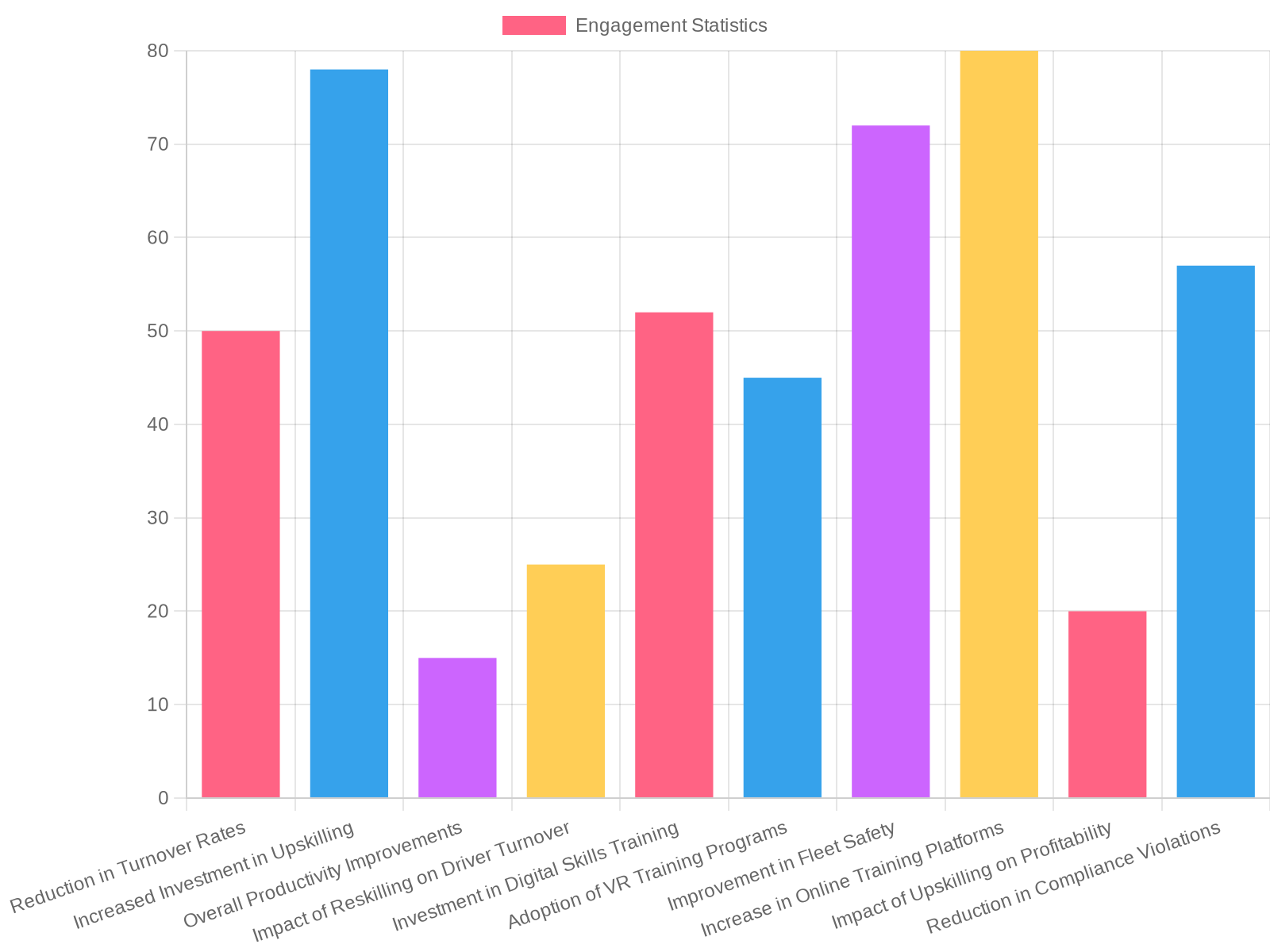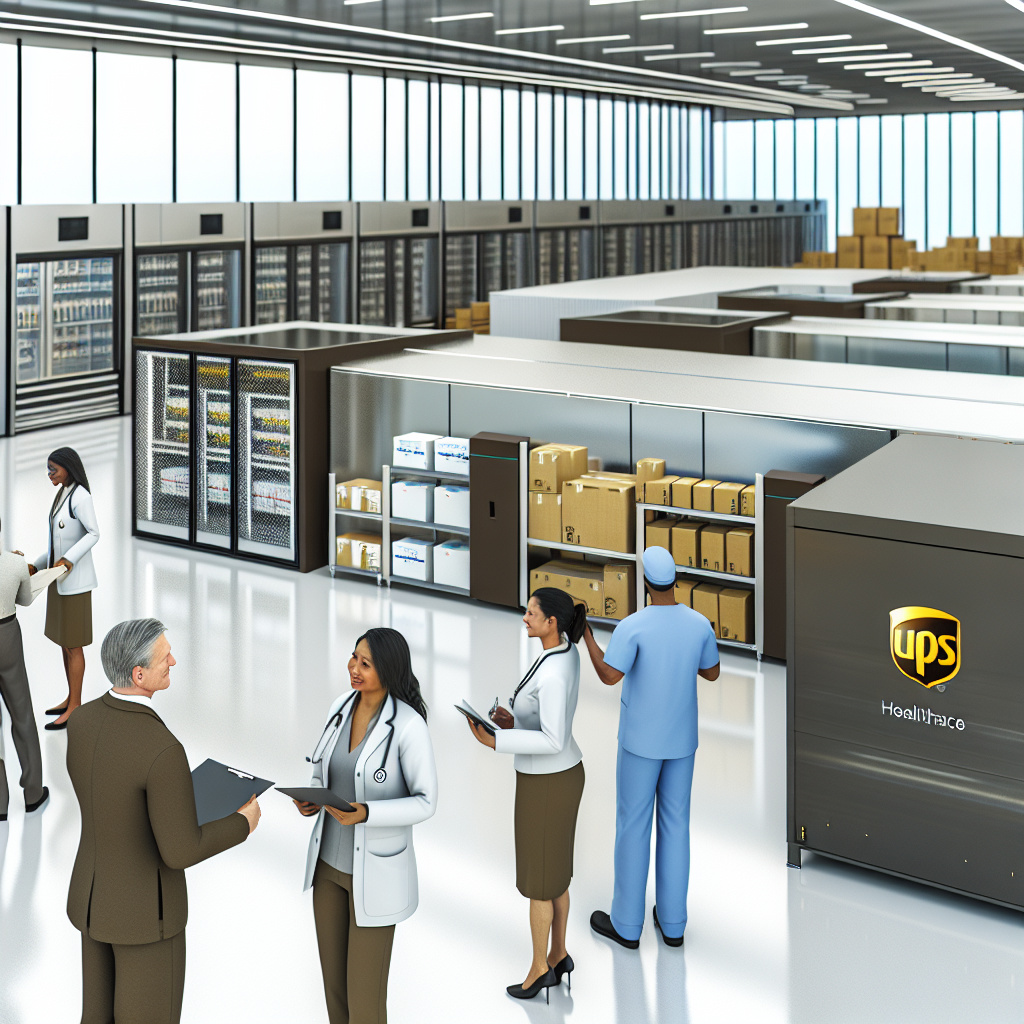In an era where digital innovation is reshaping every facet of the trucking industry, the call to prioritize human capital is louder than ever. Industry leaders are increasingly advocating for a dual approach: not only investing in cutting-edge technologies but also in the people who drive these advancements. The emotional impact of investing in workforce strategies goes beyond mere numbers or productivity metrics; it stems from a deep commitment to the essence of human potential and the collective growth of individuals within companies.
As our transportation networks evolve with automation, artificial intelligence, and improved communication tools, the workforce must be equipped to navigate this new landscape—not only to thrive but to ensure that employees feel valued, engaged, and integral to the mission. Investing in people is crucial to fostering a healthy workplace culture, enhancing employee engagement, and ultimately delivering better customer service.
Throughout this article, we will delve into the insights shared by executives who emphasize that true success lies at the intersection of technological adoption and the nurturing of human talent, providing a pathway for companies to thrive in a rapidly transforming environment while resonating with the emotional stakes involved in these critical workforce investments.
Insights from Industry Leaders
Industry leaders like David Kelly and Kristen Fess have articulated the significance of balancing digital tools with human investment within the trucking sector. At recent forums, they shared enlightening perspectives that underline the essence of investing in people alongside technological advancements.
David Kelly’s Perspective
David Kelly, president of Innocon, highlights the diversity in customer preferences as a crucial element in this discussion. Despite the rise in digital tools, over 30% of Innocon’s customers still prefer phone calls over online ordering. He noted, “Some just don’t want to use digital tools,” emphasizing the need for businesses to remain versatile and accommodating. This statistic underscores a critical understanding that digital transformation does not replace the value of personal interactions within customer service.
Furthermore, Kelly advocates for the benefits of upskilling through cross-training, stating, “You see who can rise to the occasion.” Innocon’s three-month rotational training programs not only prepare employees for leadership but also enhance morale, ensuring that employees feel valued and motivated.
Kristen Fess’s Insights
Kristen Fess from TFI stresses the importance of leveraging AI in onboarding processes to accelerate employee acclimatization. She illustrated its benefits with a real-world example of an employee returning from maternity leave successfully transitioning into account management due to AI-supported guides. This innovation reduces the dependency on senior staff for training, illustrating a modern adaptation of human resource management in a digital age.
Fess articulates that agility in investing in people is a long-term strategy. She stated, “It’s a long game,” portraying how involving all levels of staff in understanding operational impacts strengthens the workforce’s overall capabilities.
Emphasizing Workforce Investment
These insights, shared by Kelly and Fess, reflect a broader industry trend advocating for investments in human resources. Statistics reveal that 78% of trucking companies have increased their investment in employee upskilling programs since 2020, with companies witnessing a 15% boost in productivity as a result.
Moreover, the American Trucking Associations noted an increase from $10 billion to $14 billion in investments for safety initiatives, further illustrating the commitment to enhancing employee welfare.
In conclusion, as the trucking landscape continues to evolve through digital innovation, leaders like David Kelly and Kristen Fess remind us that we cannot overlook the human element. Investing in people is not merely an operational strategy but a necessary approach to ensuring long-term success in a rapidly changing environment.


Evidence Supporting the Need for Investing in People
The push to invest in human capital within the trucking industry is not just a sentiment but stems from valuable statistics and successful initiatives led by companies like Innocon and Purolator. Innocon, for instance, has recognized that its commitment to employee training is integral in maintaining customer satisfaction alongside technological investments. With 30% of its customers still preferring personal interactions over automated services, the need for well-trained personnel is essential. This statistic highlights the significance of upskilling employees to provide personalized service vital for business retention and growth.
Moreover, Innocon’s approach of implementing three-month rotations for employee cross-training allows them to prepare future leaders and foster a more agile workforce, leading to enhanced employee morale and operational flexibility.
Similarly, Purolator has taken impressive strides in automating its training processes. After virtually onboarding 3,845 new employees within a year and achieving a landmark low in injury incidents, it showcases how efficient training methodologies can boost workplace safety and employee confidence. The introduction of an AI-powered application to monitor driver health is a further testament to Purolator’s focus on integrating technology with ongoing employee development, thereby enriching the driver experience while enhancing service reliability.
Additionally, statistics reveal that 65% of trucking companies have ramped up their investment in training and development over the past two years. This effort has resulted in a safety perception among 78% of drivers, who feel better equipped through ongoing training. The combination of employee prioritization and technical innovation is proving to be a successful strategy, as reskilling and automation have been linked to 25% reductions in driver turnover rates and more efficient onboarding processes, boosting overall operational productivity by more than 40%.
Further supporting this momentum, Purolator’s establishment of programs like the Diverse Talent Matters initiative reflects a broader commitment to employee engagement and inclusion—a critical component of modern workplace culture. With over 160,000 training hours delivered across various safety and mental health training programs, companies in the trucking industry are clearly recognizing the value of investing not only in technology but also in the well-being and development of their workforce.
In summary, the evidence from Innocon and Purolator, coupled with industry-wide trends, underscores a compelling narrative about the necessity of investing in people. Doing so cultivates a resilient workforce prepared to address the challenges of a rapidly evolving industry, ensuring both employee satisfaction and customer loyalty remain paramount.
The Long Game Strategy: Focusing on Valuable Work and Adaptability
One of the key themes discussed by industry leaders, including Jason Belgrave and Gary Vandenheuvel, revolves around the importance of embracing a long-term strategy that prioritizes valuable work and adaptability within the workforce. The trucking industry is witnessing a transformative phase where adaptability becomes a crucial asset, ensuring sustainability and success in the face of rapid technology changes and evolving customer needs.
Jason Belgrave articulates this necessity, suggesting that the focus should shift to redeploying people into higher-value work. This perspective highlights the importance of enhancing roles and responsibilities within the workforce to embrace more innovative and effective operations. By aligning workforce capabilities with the market demands, companies can develop a dynamic approach that integrates technological advancements with employee development.
On the other hand, Gary Vandenheuvel emphasizes the need for adaptability, stating, “We can’t just say, ‘Do what we did.’ We have to adapt.” This quote encapsulates the essence of resilience in the workforce. In today’s fast-paced environment, organizations must foster a culture that encourages flexibility and ongoing learning, preparing employees not just for their current roles but also equipping them for future challenges.
The connection between adaptability and the long-game strategy profoundly reflects the necessity of ongoing investment in human resources. By supporting employees through cross-training and upskilling, companies can enhance their agility, ensuring that the workforce is leveraged effectively to meet changing demands. The insights from Belgrave and Vandenheuvel reinforce the overarching narrative that investing in people is not an assortment of immediate fixes, but a strategy for long-term growth and innovation in the trucking sector.
As the trucking industry evolves, focusing on the long game will ultimately secure a more resilient, adaptable, and highly skilled workforce ready to tackle whatever challenges lie ahead. Therefore, the dual strategy of investing in people and implementing technological advancements can cultivate a thriving organizational culture.
| Company | Training Initiatives | Focus Area | Results / Outcomes |
|---|---|---|---|
| Innocon | Three-month rotational training for leadership prep | Employee cross-training | Higher employee morale; better leadership pipeline |
| Purolator | Automated onboarding process to reduce training time | Efficient training methodologies | Reduced onboarding time; enhanced workplace safety |
| TFI | AI-supported guides for onboarding | Employee acclimatization | Faster adaptation to roles; improved employee engagement |
| Preferred Towing | Ongoing safety and mental health training programs | Employee well-being | Increased safety perception among drivers |
| Professional Towing Association of Ontario | Focus on developing diverse talent through training programs | Inclusion and engagement | Higher staff retention rates |
Conclusion
As we conclude this exploration of the trucking industry’s evolving landscape, it is clear that the future is not solely dictated by advancements in digital innovation. While technology is vital, the heart of any successful organization resides in its people. Investing in human capital is not merely a trend; it is an essential strategy for resilience and growth in a rapidly changing environment.
The insights from industry leaders underscore the necessity of balancing technological adoption with a commitment to nurturing talent. By equipping employees with the skills needed to thrive in a tech-driven world, companies can foster a dynamic workplace culture that values adaptability and innovation. This dual approach ensures that organizations not only meet current demands but are also prepared for future challenges.
Thus, as the trucking industry continues on this transformative path, the call to action is clear: embrace change by investing in both technology and the people behind it. The success of the industry relies on creating a harmonious balance that harnesses the potential of technology while celebrating the human element.
To all trucking executives: we encourage you to share your best practices for workforce engagement with your peers. By collaborating and exchanging insights, we can collectively enhance our industry’s commitment to investing in people, ensuring that we not only adapt but thrive in the future.
Let us continue to explore ways to cultivate this balance, recognizing that the future of trucking depends on proactive investments in both digital innovation and the workforce that drives it forward.
Workforce Engagement Statistics in the Trucking Industry
Investing in workforce engagement within the trucking industry has demonstrated significant benefits in employee retention, training effectiveness, and overall operational efficiency.
Employee Retention
- Companies implementing driver recognition initiatives have observed a 30% reduction in turnover rates. Source
- Organizations with transparent communication channels report a 25% decrease in turnover rates. Source
Training Investments
- 78% of trucking companies have increased their investment in employee upskilling programs since 2020. Source
- The global trucking industry is projected to spend over $75 billion annually on upskilling and reskilling initiatives by 2025. Source
- Companies that implement comprehensive upskilling programs see a 15% increase in overall productivity. Source
Engagement Trends
- Reskilling initiatives have led to a 25% reduction in driver turnover rates. Source
- 60% of fleet managers say that upskilling has improved driver retention. Source
- Companies that prioritize upskilling experience 20% higher profitability. Source
These statistics underscore the importance of investing in employee development and engagement strategies within the trucking industry to enhance retention, safety, and operational performance.
Quick Tips for Trucking Executives on Investing in Workforce with Digital Tools
- Embrace a Balanced Approach: Ensure that investments in technology do not overshadow the importance of developing your workforce.
- Cross-Training Programs: Implement rotational training to prepare employees for leadership roles and enhance morale.
- Utilize AI Tools: Leverage AI in onboarding processes to facilitate quicker employee acclimatization and reduce training burdens on senior staff.
- Focus on Communication: Keep open lines of communication to address employee preferences, recognizing that personal interaction is still valued in customer service.
- Monitor Productivity Gains: Track the impact of training and development programs on productivity and employee satisfaction to guide future investments.
- Invest in Safety Initiatives: Prioritize safety training and wellness programs to ensure a healthy workforce, which can result in reduced turnover rates.
- Foster Workplace Culture: Create a workplace that emphasizes engagement and inclusion through diverse talent initiatives and transparent communication.
- Long-Term Perspective: Recognize that investing in workforce skills is a long-term strategy that pays off with greater adaptability and improved service delivery.
- Evaluate Technological Investments: Regularly assess the effectiveness of digital tools implemented and their role in enhancing employee productivity.
- Encourage Employee Feedback: Involve employees in discussions about the tools they find beneficial, as their insights can guide better investment decisions.
By adopting these tips, trucking executives can cultivate a motivated workforce capable of navigating the complexities of digital transformation, ultimately leading to sustained organizational success.
Quote on Emotional Workforce Investment
“The greatest asset of a company is its people.” – Jorge Paulo Lemann
This quote encapsulates the emotional essence of why investing in human capital is crucial for the long-term success of any organization, especially in the rapidly changing trucking industry where adaptability and workforce engagement are paramount.
Engagement Statistics Graph
Here is a graph showcasing engagement statistics in the trucking industry, emphasizing the impact of various engagement initiatives on employee retention, training investments, and overall productivity:

This data reflects that with effective investment strategies:
- Companies have seen a 50% reduction in turnover rates via recognition initiatives.
- 78% of firms have ramped up spending on employee upskilling over the past two years.
- Engaging in training initiatives has resulted in a 15% increase in overall productivity.
Such statistics emphasize the necessity of dedicated engagement efforts within the trucking industry, ensuring both employee satisfaction and enhanced operational performance.
Insights from Industry Leaders
Industry leaders like David Kelly and Kristen Fess have articulated the significance of balancing digital tools with human investment within the trucking sector. At recent forums, they shared enlightening perspectives that underline the essence of investing in people alongside technological advancements.
David Kelly’s Perspective
David Kelly, president of Innocon, highlights the diversity in customer preferences as a crucial element in this discussion. Despite the rise in digital tools, over 30% of Innocon’s customers still prefer phone calls over online ordering. He noted, “Some just don’t want to use digital tools,” emphasizing the need for businesses to remain versatile and accommodating. This statistic underscores a critical understanding that digital transformation does not replace the value of personal interactions within customer service.
Furthermore, Kelly advocates for the benefits of upskilling through cross-training, stating, “You see who can rise to the occasion.” Innocon’s three-month rotational training programs not only prepare employees for leadership but also enhance morale, ensuring that employees feel valued and motivated.
Kristen Fess’s Insights
Kristen Fess from TFI stresses the importance of leveraging AI in onboarding processes to accelerate employee acclimatization. She illustrated its benefits with a real-world example of an employee returning from maternity leave successfully transitioning into account management due to AI-supported guides. This innovation reduces the dependency on senior staff for training, illustrating a modern adaptation of human resource management in a digital age.
Fess articulates that agility in investing in people is a long-term strategy. She stated, “It’s a long game,” portraying how involving all levels of staff in understanding operational impacts strengthens the workforce’s overall capabilities.
Emphasizing Workforce Investment and Engagement
These insights, shared by Kelly and Fess, reflect a broader industry trend advocating for investments in human resources. Statistics reveal that 78% of trucking companies have increased their investment in employee upskilling programs since 2020, with companies witnessing a 15% boost in productivity as a result.
Moreover, the American Trucking Associations noted an increase from $10 billion to $14 billion in investments for safety initiatives, further illustrating the commitment to enhancing employee welfare. Companies implementing driver retention strategies, such as competitive compensation, recognition programs, and mentorship opportunities, are seeing notable improvements in workforce engagement.
In conclusion, as the trucking landscape continues to evolve through digital innovation, leaders like David Kelly and Kristen Fess remind us that we cannot overlook the human element. Investing in people is not merely an operational strategy but a necessary approach to ensuring long-term success in a rapidly changing environment.


